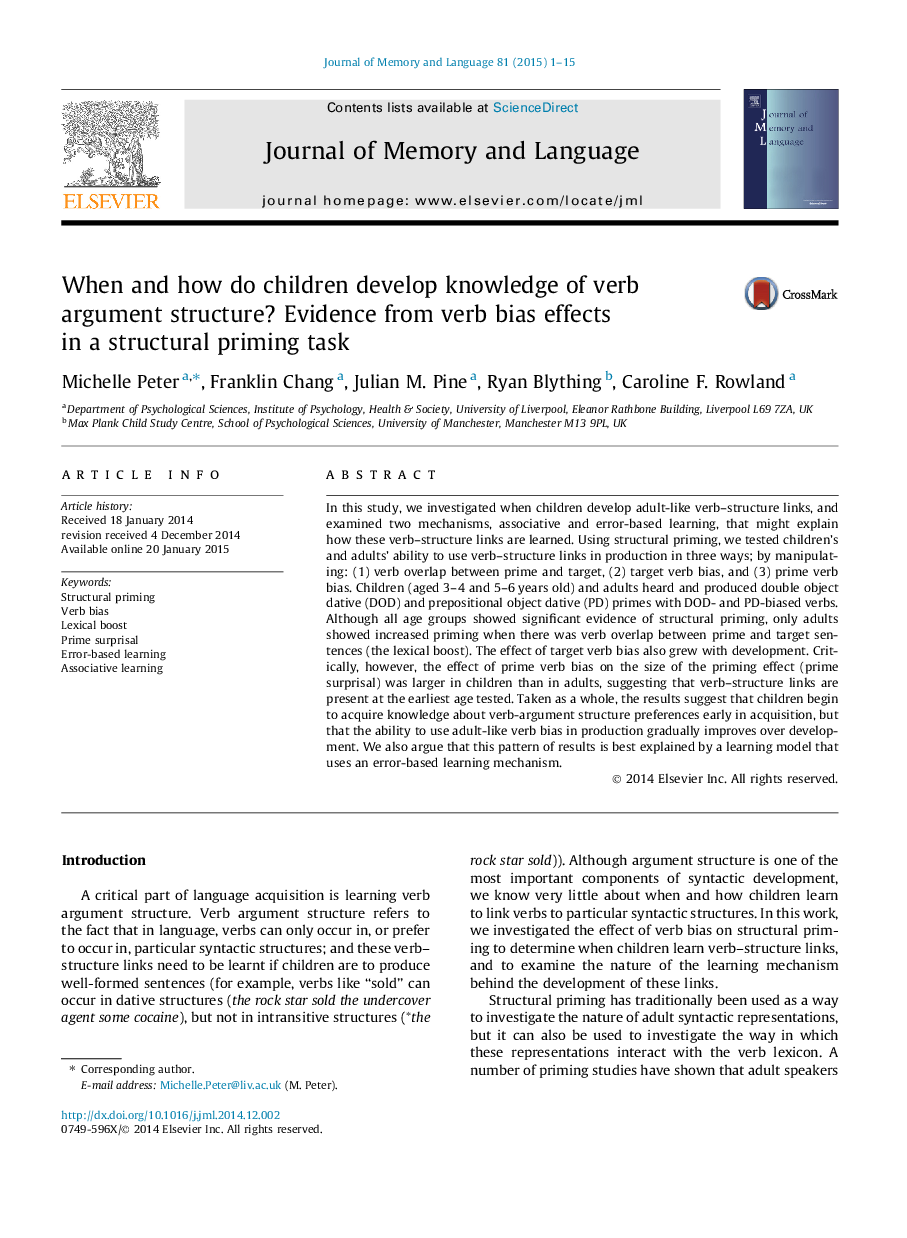| کد مقاله | کد نشریه | سال انتشار | مقاله انگلیسی | نسخه تمام متن |
|---|---|---|---|---|
| 931795 | 1474638 | 2015 | 15 صفحه PDF | دانلود رایگان |
• Both children and adults demonstrate evidence of abstract structural priming.
• Only adults, but not children, show evidence of a lexical boost.
• However, target verb bias and prime surprisal effects are seen across development.
• Children learn about verb argument structure preferences early in acquisition.
• Development of verb–structure links is best explained by error-based learning.
In this study, we investigated when children develop adult-like verb–structure links, and examined two mechanisms, associative and error-based learning, that might explain how these verb–structure links are learned. Using structural priming, we tested children’s and adults’ ability to use verb–structure links in production in three ways; by manipulating: (1) verb overlap between prime and target, (2) target verb bias, and (3) prime verb bias. Children (aged 3–4 and 5–6 years old) and adults heard and produced double object dative (DOD) and prepositional object dative (PD) primes with DOD- and PD-biased verbs. Although all age groups showed significant evidence of structural priming, only adults showed increased priming when there was verb overlap between prime and target sentences (the lexical boost). The effect of target verb bias also grew with development. Critically, however, the effect of prime verb bias on the size of the priming effect (prime surprisal) was larger in children than in adults, suggesting that verb–structure links are present at the earliest age tested. Taken as a whole, the results suggest that children begin to acquire knowledge about verb-argument structure preferences early in acquisition, but that the ability to use adult-like verb bias in production gradually improves over development. We also argue that this pattern of results is best explained by a learning model that uses an error-based learning mechanism.
Journal: Journal of Memory and Language - Volume 81, May 2015, Pages 1–15
